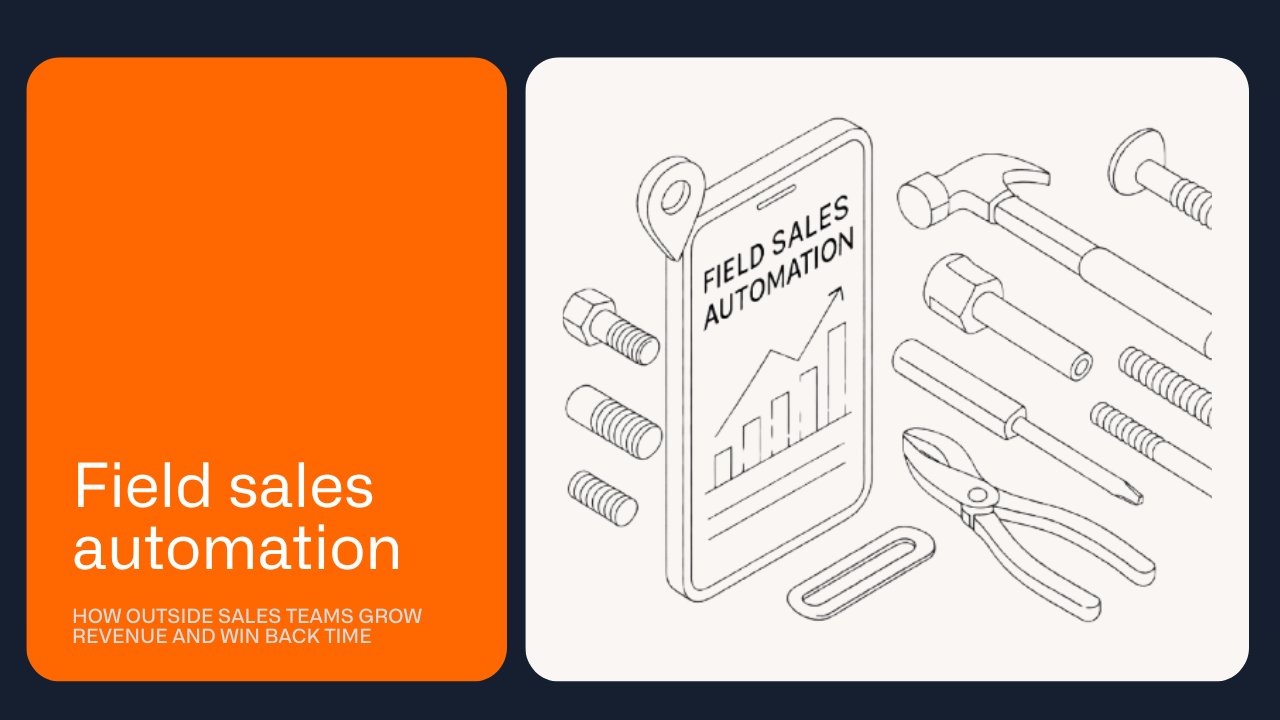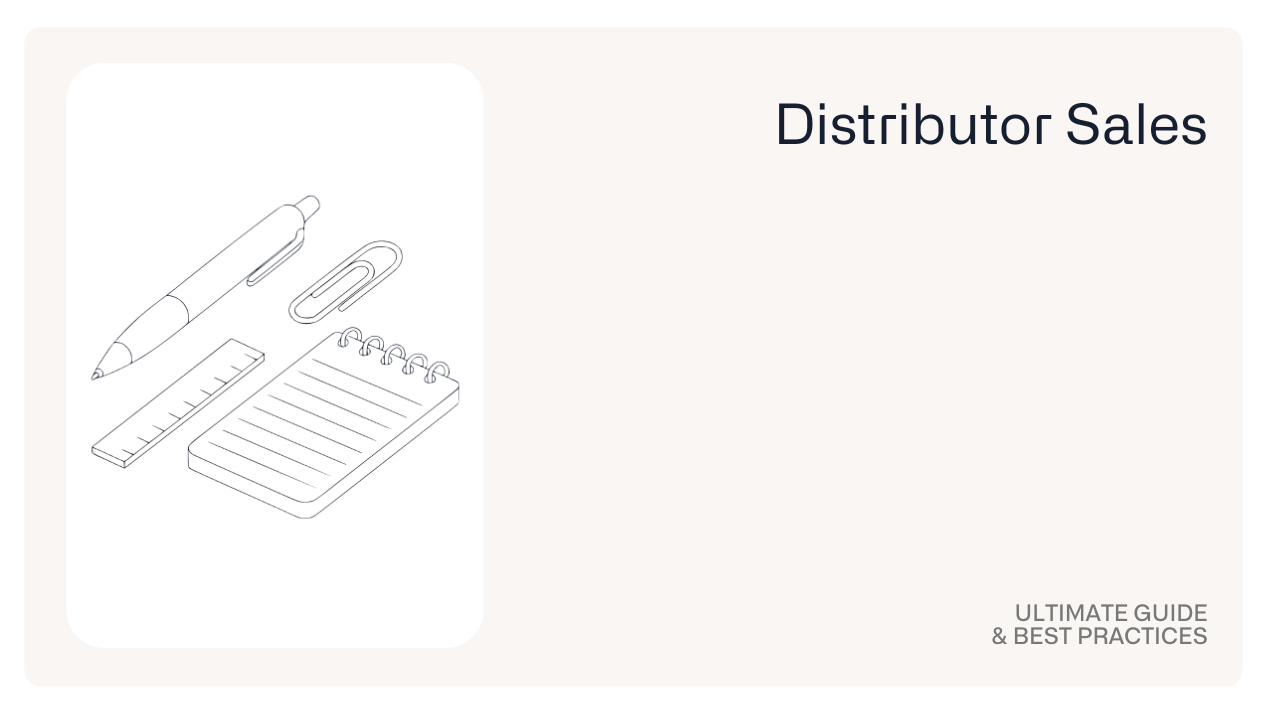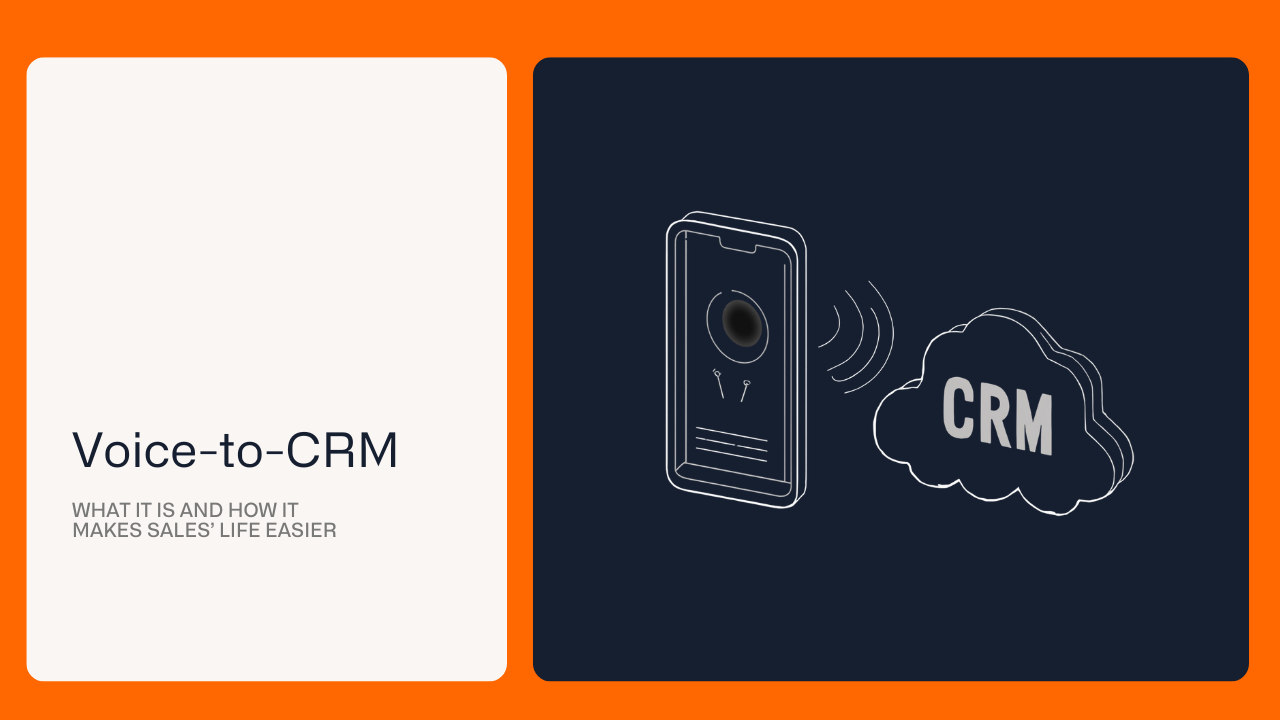Field Sales Automation in 2025: How outside sales teams grow revenue and win back time
Summary
Outside sales teams in manufacturing, distribution, and B2B services are under pressure: too many accounts, too many SKUs, and not enough time. Field sales automation solves this by:This guide covers concrete examples, use cases, and tools to get started.
- Automating manual CRM updates and meeting prep
- Surfacing upsell opportunities and churn risks hidden in ERP + CRM data
- Helping reps focus on the 20% of accounts that drive 80% of revenue
- Giving managers clean data for forecasting and coaching
What is field sales automation?
Field sales automation means using technology to handle repetitive, error-prone, or time-consuming tasks for reps who spend most of their day on the road.
Think route planning, meeting preparation, CRM updates, order capture, and reporting. Instead of burning hours on admin, reps can focus on what matters: building relationships and closing business.
Why does this matter for outside sales teams?
Outside sales in manufacturing and distribution has unique challenges:
- Too many accounts per rep → smaller customers slip away unnoticed.
- Too many products → upsell and cross-sell opportunities remain hidden.
- Disconnected systems → ERP holds order data, CRM holds relationship data, but rarely are they connected.
- Travel time → less time for meaningful conversations with customers.
Automation addresses each of these challenges by making work more structured, data-driven, and efficient.
How does automation change a rep’s day?
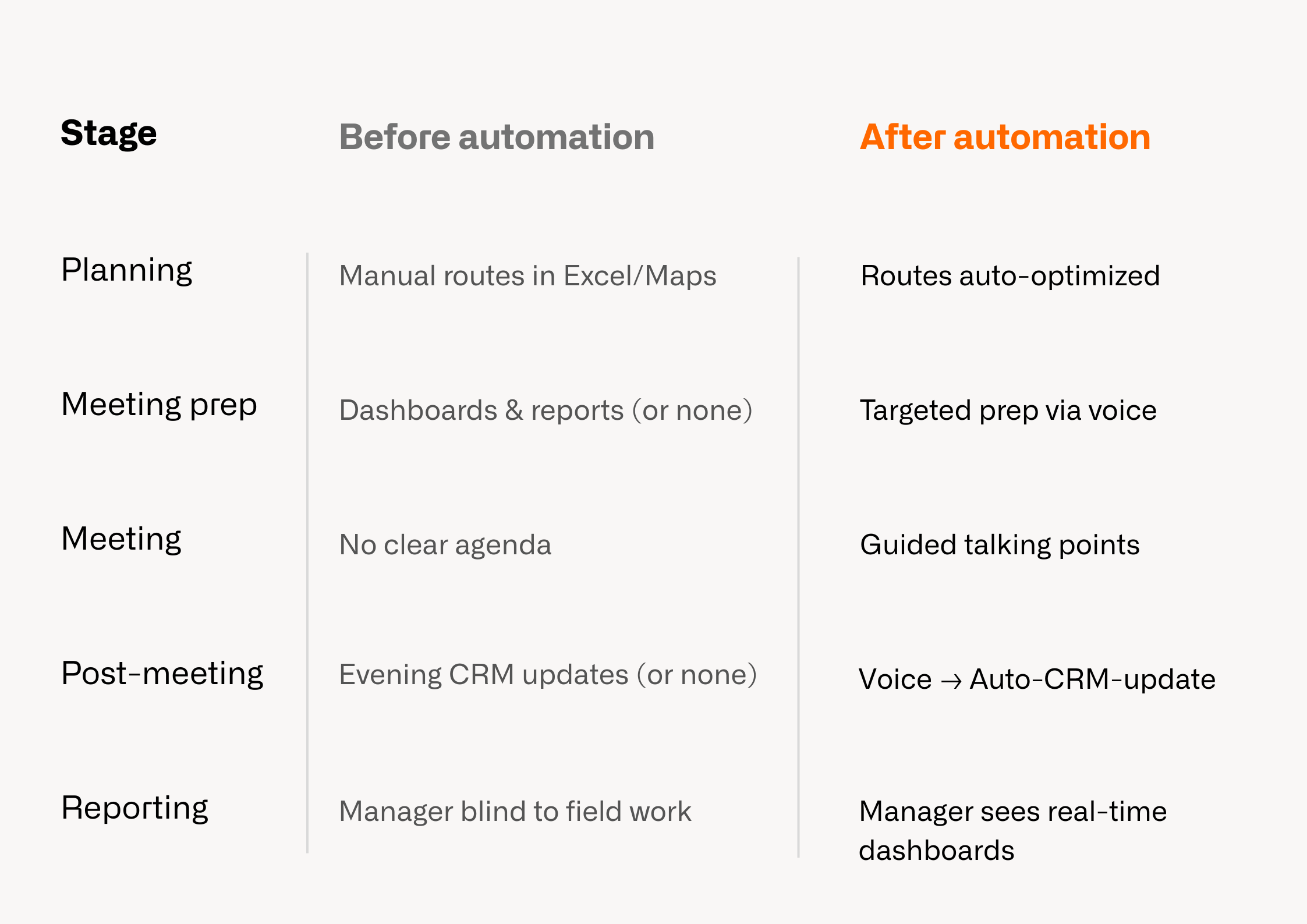
Before automation:
Before automation, Sunday evening is spent planning routes in Excel or Google Maps.
On Monday, the rep visits customers based on habit or gut feeling. Meetings are prepped with nothing more than the last invoice. Notes are scribbled in the car and entered into CRM later - if at all. For the manager back at HQ, the pipeline picture is patchy at best.
After automation:
After automation, the week looks very different.
Routes are optimized automatically, saving hours of planning. Each morning, the rep gets a short brief: “These three accounts show churn risk, and this one has strong upsell potential.” When they walk in, they know the account’s history, open orders, and product recommendations. After the meeting, the rep dictates a quick note and the CRM updates itself. Their manager can immediately see activity levels, churn risks, and upsell signals in a dashboard.
The rep spends more time selling and less time juggling admin. The manager coaches from data, not guesswork.
What kind of ROI can you expect?
The financial case for automation is straightforward. Most reps reclaim between 6 and 8 hours per week once they stop manually logging meetings and preparing with spreadsheets. That alone justifies the investment.
But the real upside comes from revenue. By both making use of the saved time and surfacing hidden upsells and catching churn risks early, teams can lift sales by 5–15% (or even more).
In fact, preventing the loss of even a single major account can pay for the system several times over.
For managers, the hidden ROI is in forecasting. With every visit and note logged automatically, they finally have a reliable pipeline view to make better decisions.
A simple example:
10 reps × 7 hours saved/week × €70/hour = €4,900 saved weekly. That’s nearly €20,000/month in productivity. Add just a 5% lift in a €50M business and you’re looking at an additional €2.5M in annual revenue.
Which companies are already doing this?
Plate
Plate (office supplies distributor, Acto customer) was facing a common challenge: customers quietly churning while sales reps worked off Excel lists that were outdated before they were even used.
After implementing Acto, Plate’s reps began receiving daily churn-risk and upsell alerts directly in Outlook.
The impact was clear: +10% revenue uplift in the pilot, 1–1.5 hours saved per rep every day, and a 35% reduction in time between orders. Instead of working blind, the team acted proactively — and the numbers followed.
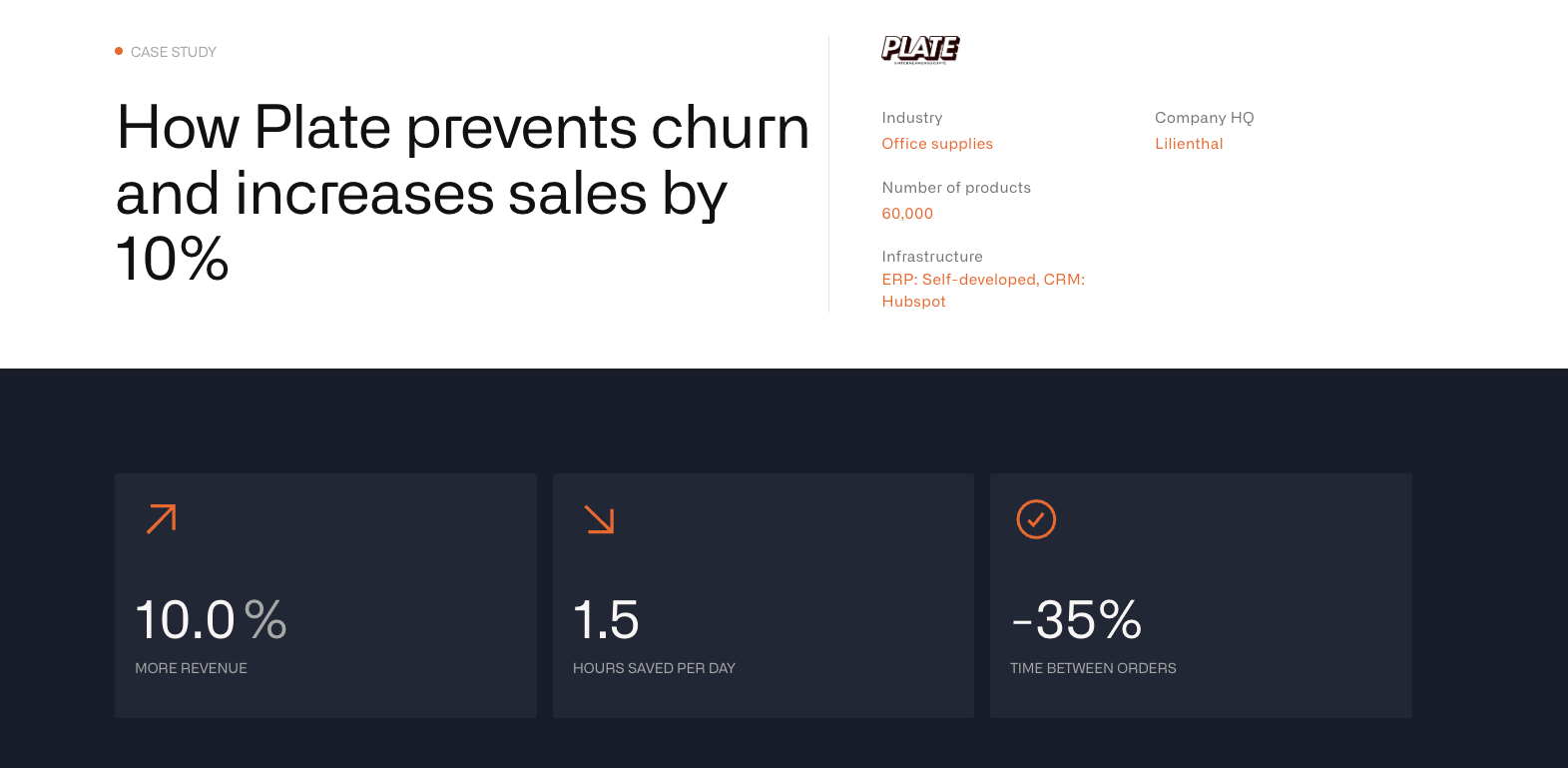
Coca-Cola Hellenic
Coca-Cola Hellenic, one of the world’s largest Coca-Cola bottlers, took a different angle.
They automated in-store inventory audits with AI-powered image recognition, enabling reps to cover 3.6× more stores and reduce audit times by up to 9×. By removing the manual data work, Coca-Cola freed reps to spend more time ensuring shelves were stocked and customers were supported.
Würth
Würth, a €20B global leader in assembly and fastening, has equipped 3,500 field reps with its in-house AI assistant “Pico.” Reps use it on the road to prepare conversations and even send invoices by voice. It’s an example of how even very traditional industries are embracing automation to sharpen field sales efficiency.

Together, these cases highlight a simple truth: whether it’s ERP-driven revenue intelligence, route optimization, or digital assistants, automation is becoming a standard part of outside sales.
Aloha
Badger Maps offers a clear proof of the value of route optimization. Aloha, one of its customers in the restaurant distribution space, used Badger Maps to cut planning time by 50% and reduce driving time by 25%.
For reps who spend more time behind the wheel than at customer sites, this kind of automation translates directly into revenue and customer satisfaction.
How can you roll this out without overwhelming your team?
The biggest risk with new tools is overloading reps. If automation feels like “one more system to manage,” adoption will stall. The key is to phase the rollout and prove value quickly.
- Start with a pilot. Choose 5-10 reps or one region. Focus on a single pain point - for example, automating route planning, meeting prep, or CRM updates. Track time saved and data quality before expanding.
- Layer capabilities gradually. Once reps see the value in one area, add more: route optimization, churn alerts, upsell recommendations, or automatic follow-up tasks. Each step should make their day easier, not harder.
- Measure and share wins. Quantify the hours saved, the increase in customer coverage, or the reduction in churn. Share those stories internally to build momentum.
- Bring managers along. Managers should use the new data in their coaching and forecasts. If leadership treats automation insights as core to decision-making, reps will follow.
By taking this step-by-step approach, you avoid tool fatigue and ensure automation becomes part of the daily rhythm - not a one-off project.
Within 90 days, most teams can show concrete results in time savings, customer coverage, and revenue impact.
What should you watch out for?
- Integration matters. If ERP isn’t connected, upsell/churn signals won’t work.
- Mobile-first. Reps won’t use tools that aren’t lightweight and on their phone.
- Adoption before expansion. Nail the daily prep and CRM auto-logging before layering more features.
- Coaching culture. Managers must use the data in 1:1s for it to stick.
How does Acto fit in?
Acto helps outside sales teams:
- Prioritize the right customers with Revenue Intelligence across ERP + CRM.
- Prepare reps with daily briefs highlighting churn risks and upsell opportunities.
- Automate CRM updates with voice-to-text meeting capture and auto-generated follow-ups.
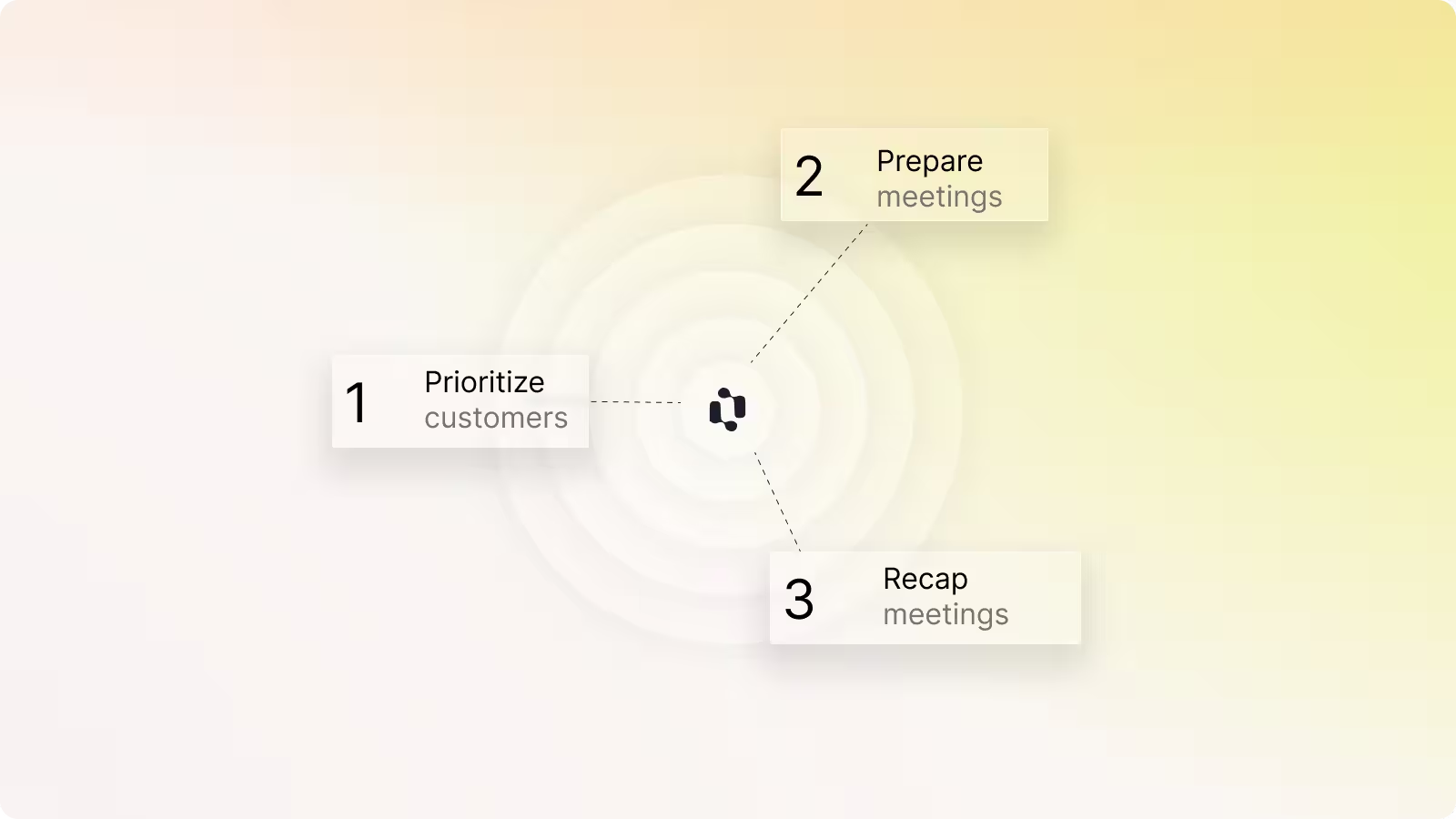
Plate’s +10% revenue lift and 1.5 hours/day time savings show what’s possible when automation is applied directly to outside sales work.
What’s the bottom line?
Field sales automation isn’t about replacing people. It’s about removing the manual work that keeps reps from selling and managers from coaching. When reps spend less time planning routes, digging through spreadsheets, or typing notes - and more time having the right conversations with the right customers — revenue follows.
Companies like Plate, Coca-Cola Hellenic, and Würth show that this shift is already underway.
The only question is: when will your team make the move?
Lastest blog posts
Lorem ipsum dolor sit amet, consetetur sadipscing elitr


